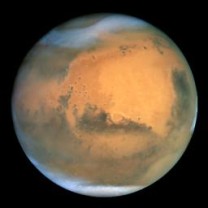 Earth Facts
Earth Facts
Check out our range of fun planet Earth facts for kids and find interesting information about our world, including facts related to volcanoes, earthquakes, minerals, structures, gas and much more.
Children will love the cool trivia, did you know facts and other interesting Earth info that will help them learn a thing or two along the way. Read on and enjoy learning about the amazing planet we live on.
.jpg) Magma is the hot liquid rock under the surface of the Earth, it is known as lava after it comes out of a volcano. More volcano facts.
Magma is the hot liquid rock under the surface of the Earth, it is known as lava after it comes out of a volcano. More volcano facts.- Natural gas doesn't have an odour, strong smells are added to it by humans so it can be detected when there are leaks. More gas facts.
- Hawaii is moving towards Japan at the speed of 10cm a year. This is because they are on different tectonic plates.
- The worlds largest desert is the Sahara, it covers about one third of Africa! Moredesert facts for kids.
- Stretching out to an impressive length of 6696 kilometres (4160 miles) long, the Nile River is the longest river on earth. More Nile River facts, Amazon River facts,Mississippi River facts and other river facts.
.jpg) The volcanic rock known as pumice is the only rock that can float in water.
The volcanic rock known as pumice is the only rock that can float in water.- Mt Everest is the highest mountain on earth, its peak reaches 8,848 metres (29028 feet) above sea level. Check out the highest mountains on each continent of the Earth.
- On average the Atlantic Ocean is the saltiest of Earth’s major oceans. More ocean facts.
- Earthquakes that occur out at sea can cause huge tsunamis capable of reaching land and endangering people. More tsunami facts.
- Metamorphic rocks are formed by extreme pressure and heat. Read more aboutmetamorphic, igneous and sedimentary rocks, find information on rocks and mineralsor check out our interesting fossil facts.
- The Earth isn't perfectly round, it is slightly flattened at the north and south poles. Learn about the polar regions with our Antarctica facts and Arctic facts.
- Scared of the Bermuda Triangle? Despite its reputation it is actually part of a common sailed shipping route. More Bermuda Triangle mystery facts.
- Scientists have the dated the Earth as being between 4 and 5 billion years old!
- The Amazon rainforest is the largest tropical rainforest on Earth. Enjoy morerainforest facts or learn about jungles.
- Talc is the softest mineral found on Earth, reaching just 1 on Mohs scale of hardness, it is often used to make talcum powder.

- The Great Barrier Reef in Australia is the largest living structure in the world. MoreGreat Barrier Reef facts.
- The Niagara Falls are located on the border of the USA and Canada. More Niagara Falls facts.
- Rock found at the bottom of the Grand Canyon is around 2 billion years old. MoreGrand Canyon facts.
- Although earthquakes can be deadly, most are very small and not even felt by humans. More earthquake facts

